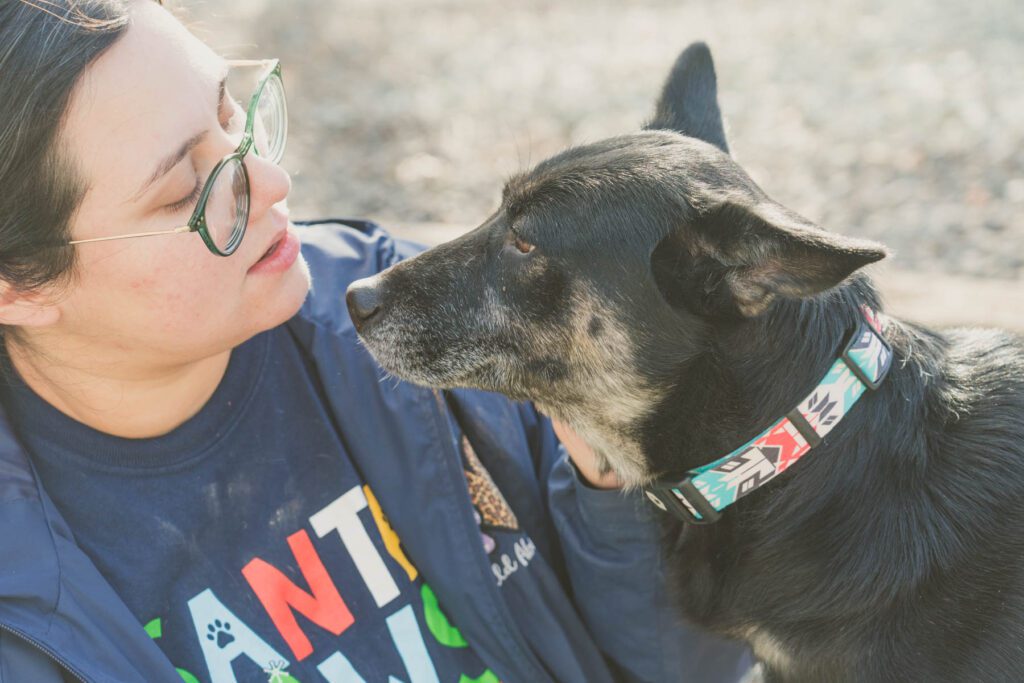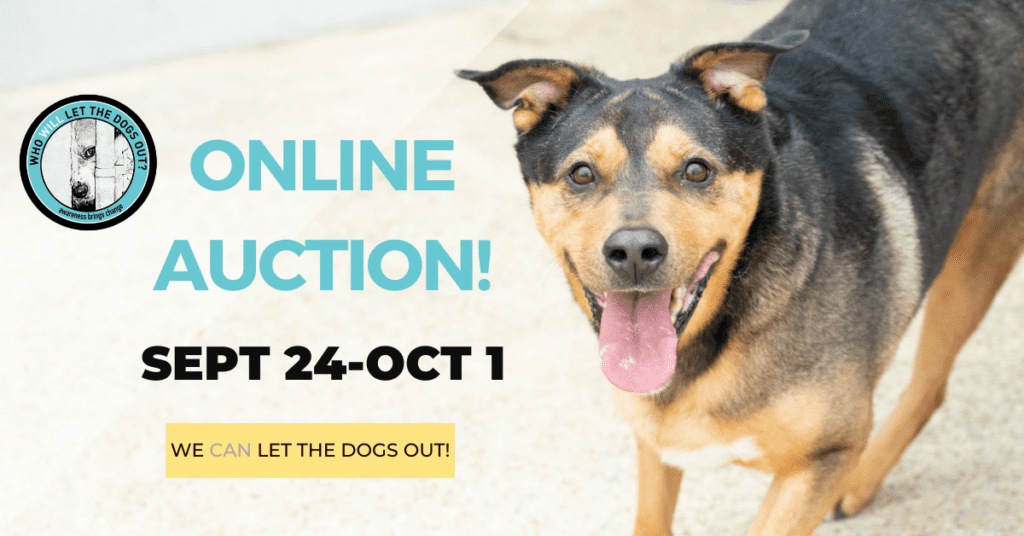Our visit to CARA – Carolina Animal Rescue & Adoption, a private, nonprofit rescue in Sanford, North Carolina, a town in Lee County that sits pretty much smack dab in the center of the state, was our 100th shelter stop. (I loved the coincidence of their name!)



CARA is tucked away on a wooded lot, beside a cement plant, which is the perfect neighbor for an animal shelter in terms of competing noise levels. The building is the old Lee County shelter, which morphed into a Humane Society twenty years ago when the shelter was moved to another location. That Humane Society then eventually became CARA, which saves about 300 animals a year, many pulled from the Lee County shelter.
Estella, the shelter manager, began volunteering at CARA five years ago. She is a vet tech, and when the shelter manager position opened up three years ago, she stepped into that role quite naturally. She is a passionate and articulate young woman who clearly loves her job, and the animals in her care.

CARA is a no-kill shelter in the truest sense of the word, having only euthanized one dog in the last three years. Estella teared up telling us about Polo (whose picture hangs in the lobby), an elderly dog whose health was failing.
Any animal is lucky to land at CARA where they go to great lengths to ensure that their animals will be safe and healthy for the rest of their lives. Not only do they take back any of their adopted animals that are returned, they treat heartworm and tackle other challenging medical issues, seeking out specialists and working to raise the funds to pay for treatment.
One 8-month-old cat we met named Gnome has a mysterious respiratory issue that the shelter has already spent $3500 in vet bills for treatments, tests, and specialists.
This is a shelter that makes a serious commitment when it rescues an animal. We met a gorgeous Akita named Carebear, who is 7 years old, friendly, super sweet, and completely blind. Carebear doesn’t get along with other dogs and has been at the shelter nine months.


We also met Noel, a senior hound dog who is heartworm positive, has a large mass on her belly, needs to be spayed, is underweight and has a dry eye condition.


Mojo has been at the shelter since he was five months old. He’s now almost three. He is incredibly fearful, but became my hesitant friend as long as the treats were forthcoming. He reminded me so much of my dog, Fanny Wiggles, who came to us equally as shy and has slowly come out of her shell thanks to agility, frisbee, and dock-diving.


Sometimes dogs need more time. And time is a luxury the average municipal shelter doesn’t have. All of the dogs we met at CARA would have died in the average municipal shelter – they cost too much, they have serious medical issues or behavioral struggles. No doubt, CARA will see that all of these animals are safe and loved the rest of their lives.
As I said, any dog that lands at CARA is a lucky dog.




CARA is funded completely on donations. They have six part-time animal care assistants, one full-time manager, and 30 volunteers who see to the physical, mental, and emotional health of the animals in their care. The dogs are fully vaccinated on intake, are tested for heartworm and given preventatives, and are all spayed/neutered. CARA is blessed to have several local vets who work with them, and the community is blessed to have access to spay/neuter at local vests and a mobile vet unit that visits the area.
Since the pandemic, owner surrenders have increased, and CARA tries very hard to work with people, whether it’s assisting them with veterinary help so that they can keep their pet or taking the animals into their care. Many of the staff and regular volunteers foster dogs (and puppies) when there is a need.
CARA used to travel quite a distance to help an animal in need, but these days they have plenty to rescue in their own community. They only recently caught a stray dog they’d been trying to catch for a year. She’s pregnant, of course, and at the time of our visit, was due any day.
They have smart practices in place like dividing their building into separate sections for adoptable animals and animals quarantined because they are newly arrived or have a medical need. They have a large play yard with separate spaces, and plenty of room for volunteers or potential adopters to spend time with the dogs.






Private shelters are a completely different situation than municipal shelters, but the best ones work with their municipal shelters to save more lives. By pulling dogs from Lee County Shelter, CARA gives Lee County the breathing room to give the dogs in their shelter more time and space. There’s less pressure to make a life/death decision before an animal has a chance to adjust to the new world of the shelter.
This is a common scenario. No-kill shelters often hold that status ONLY because of the private rescues that pull their dogs. In a sense, they enable them. In one breath, I’m so grateful for that gift, but in the other, I wonder how it prevents us from facing the harder challenges of fixing our shelter overpopulation problem.
Lee County is lucky to have CARA. It was inspiring to visit a shelter so completely committed to saving every life they can.
I caught up with Estella to see how things are going. The shelter has had to put a hold on taking in any medically needy dogs. Their medical fund is completely tapped out and they are still trying to raise funds for several dogs currently in treatment and have yet to raise the funds to treat their most recent intake, Pico de Gallo, who needs heartworm treatment.
Having met her, I know this restriction is breaking Estella’s heart. CARA does such great work, saving dogs that would be killed at most shelters. I’m rooting for them, but if you’d like to help, you can learn more and/or donate to their work on their website. Or mail a check to: 42 Deep River Road Sanford NC 27331.
You can also shop their Amazon wishlist or Chewy wishlist.
Until each one has a home,
Cara

Our online auction starts next month and it’s bigger and better than ever! I’m still amazed how many incredible items our volunteers have collected – it’ll blow you away too. Be sure to register to bid and check out all the amazing auction items. This is our most important fundraiser of the year and will fund much of the work we do in 2024, including expanding our Instagrant program. I hope you’ll not only register to bid, but share the auction with everyone you know!
If you want to learn more, be sure to subscribe to this blog. And help us spread the word by sharing this post with others. Visit our website to learn more.
You can also help raise awareness by following/commenting/sharing us on Facebook, Instagram, YouTube, Tik Tok, and the Who Will Let the Dogs Out podcast.
Learn more about what is happening in our southern shelters and rescues in the book, One Hundred Dogs & Counting: One Woman, Ten Thousand Miles, and a Journey Into the Heart of Shelters and Rescues (Pegasus Books, 2020). It’s the story of a challenging foster dog who inspired me to travel south to find out where all the dogs were coming from. It tells the story of how Who Will Let the Dogs Out began. Find it anywhere books are sold. A portion of the proceeds of every book sold go to help unwanted animals in the south.
For more information on any of our projects, to talk about rescue in your neck of the woods, or become a WWLDO volunteer, please email whowillletthedogsout@gmail.com or carasueachterberg@gmail.com.
And for links to everything WWLDO check out our Linktree.



Leave a Comment
Sign up for our newsletter
Sign up to have our latest news, grant updates, shelter visits, and more delivered to your inbox.
Share this:
Like this: